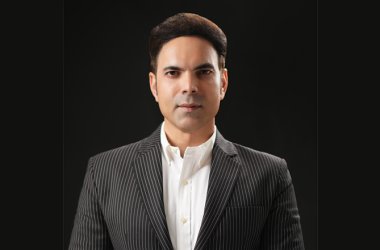
By Sahem Azzam, Senior Vice President, Orange Business – Middle East Africa and Turkey.
Circular thinking: how digital and data will power industrial companies to reduce emissions and carbon footprint plus circular operations
With COP28 hosted in Dubai, it’s timely to ask what industrial and manufacturing companies in the UAE can do to accelerate the move to lower emissions and fill the ‘circularity gap’
Industrial and manufacturing companies contribute a significant proportion of the planet’s emissions. But they are not reducing their emissions as fast as they need to.
Industrial companies generate 16% of global GDP. They are also responsible for one-fifth of the world’s carbon emissions and consume 54% of the world’s energy sources. Today, they are aware of the impact they have on the environment, and they are prepared to do whatever they can to reduce emissions. A shift to a circular economy business model is a desirable end goal.
Adopting circular economy principles could deliver $26 trillion in economic benefits by 2030, according to the Global Commission on Economy and Climate.
How can industrial companies balance the demands of sustainable and profitable growth while reducing emissions and waste from their own operations, as well as supply chains and customers?
It’s a question being asked globally and the UAE government is taking a lead with the Circular Economy Agenda 2031, the Circular Economy Policy framework, as well as Circular Economy Council and Committee. The UAE has pledged to reach its net-zero carbon goal by 2050 and announced measures to drive sustainable economic growth and work towards its climate change targets.
Circular Economy is central to the UAE’s transition to a new economic model, which is based on knowledge and innovation, and is accelerating the implementation of the country’s Circular Economy strategy in the private sector and SMEs across four key sectors – manufacturing, food, infrastructure and transport – all sectors undergoing their own transitions and supported in this process by the digital transformation of their business models.
Abu Dhabi government is set to invest Dh10 billion ($2.72bn) to double the size of its manufacturing sector by 2031. A new circular economy regulatory framework will ensure that industry is operating sustainably, including waste-to-resource, reuse, artificial intelligence, remanufacturing, bio-based materials and repair work. There is a focus on circular economy activities that create opportunities for business, such as upcycling textile waste into new products, developing artificial intelligence-enabled waste management solutions and remanufacturing electronic waste.
What circular economics is all about
Circular economics seeks to design out waste and pollution from production processes. It aims to keep products and materials in use for as long as possible and regenerate natural systems. And it strives to avoid using non-renewable resources, including fossil fuels.
In industrial companies, this can mean techniques like product as service, remanufacturing, refurbishing, asset sharing and alternative organic or secondary raw materials. It’s about designing products that use fewer raw materials and are more durable, repairable and recyclable. It’s become an imperative: the traditional industrial production model of “take-make-waste” is no longer sustainable. According to JP Morgan, if the industrial world continued along this path, worldwide demand for resources would almost triple by 2050, using up the planet’s resources by over 400%.
Initiatives are underway worldwide to address the issue. In response to a study that found 50% of total greenhouse gases and over 90% of biodiversity loss and water stress come from resource extraction and processing, the European Commission adopted the new circular economy action plan (CEAP) in March 2020, as part of the European Green Deal. So far, the world has only reached 8.6% circular economics, leaving what’s known as a circularity gap. The figure has fallen from 9.1% in 2021 to 7.2% in 2023.
Forward-thinking industrial companies are taking steps towards circular economics, which is a huge undertaking. It involves transforming business practices that have been in place for decades and bringing them into the digital, sustainable era. Many companies now have chief sustainability officers (CSOs), who are responsible for the company’s ethical and social governance (ESG) activities and overall environmental policy. CSO teams now include circular program managers, who have a dedicated responsibility for circular activities in the company.
In practice, the role of the circularity program manager requires using their company’s ecosystem and innovation projects to drive towards circular economics and away from traditional, linear take-make-waste. It encompasses things such as finding innovative ways to use recycled materials, designing recyclable products, and creating novel partnerships that facilitate circular commercial collaborations. It covers replacing fossil fuel use with biomaterials, creating and implementing take-back and on-demand new business models, and much more.
The journey towards circular economics is complex and is a gradual process, which is why it is also important to measure activities and monitor progress. This means ESG reporting is vital and product carbon footprint (PCF) measurement is essential, too. But industries suffer from lack of approved standards by which to do these things. End-to-end traceability requires data gathering across the entire value chain, which is hard to do when your data is scattered and siloed. Data-driven collaboration is key to driving optimized and efficient collaboration on circularity.
Digital enabling change
Industrial companies can leverage many digital solutions to power transformation and make circular economics a more achievable reality. Data-driven operations can make processes more robust and operations more efficient, for example. IoT technologies generate data that can be used to reduce waste and pre-empt faults in production, saving precious resources. Digital product identities and blockchain can be used to share sensitive information between supply-chain partners to maximize reuse and recycling.
Furthermore, industrial companies that want to shift towards circular economics also think ecosystem-centric. Circularity requires more coordination across value chains, more insights about materials, products and processes, such as reverse logistics and supply chains. It also requires more consideration when designing new circular materials to supply circular product manufacturers with. Companies that are data-centric and have data-driven operations have a head start on this.
In the traditional, linear industrial process, everything was largely product-centric, with companies focusing on up-front product sales to the next in line. There was little thought of creating benefits across a product’s full usage cycle, and no business model incentivized companies to extend product lifespans. Cloud computing, IoT and real-time data are key to managing these types of business model innovations.
According to the Ellen MacArthur Foundation, if industrial companies were to organize themselves in line with circular principles, they could save as much as $630 billion a year on raw materials in the EU alone. This equates to a reduction of up to 15% on direct materials required for production processes.
Decide what you want to be
Orange Business’ recent Innovation Roundtable workshop in Paris, where several industrial experts spoke about circular economics and the importance of sustainability, highlighted how innovation and digitalization go hand-in-hand with circularity and are core to the transition.
Orange Business has committed to circular economics as a key pillar of the company’s future strategy. As Jérome Goulard, Chief Sustainability Officer at Orange Business, says, “There are two sides of the digital coin. Are we part of the problem or part of the solution? We are both.”
As part of the Orange Business ‘Lead the Future’ 2030 strategy, the goals are a 45% decrease in greenhouse gas emissions in scopes 1, 2, and 3 by 2030, 50% renewable energy in the energy mix in 2025, and 30% of mobile phones sold will be collected for reuse or recycling by 2025. Under the umbrella of the Engage 2025 program, the company is committed to promoting the circular economy through eco-design and then collecting, reconditioning, repairing, recycling and increasing the overall lifespan of products.
Linear economics have had their time in industrial processes and manufacturing, and traditional industry has, for too long, been built on never-ending consumption and waste. It is time to end it and make the shift to a more sustainable circular economy model: a deep, transformative path that should be embarked on in a sincere, determined manner.





